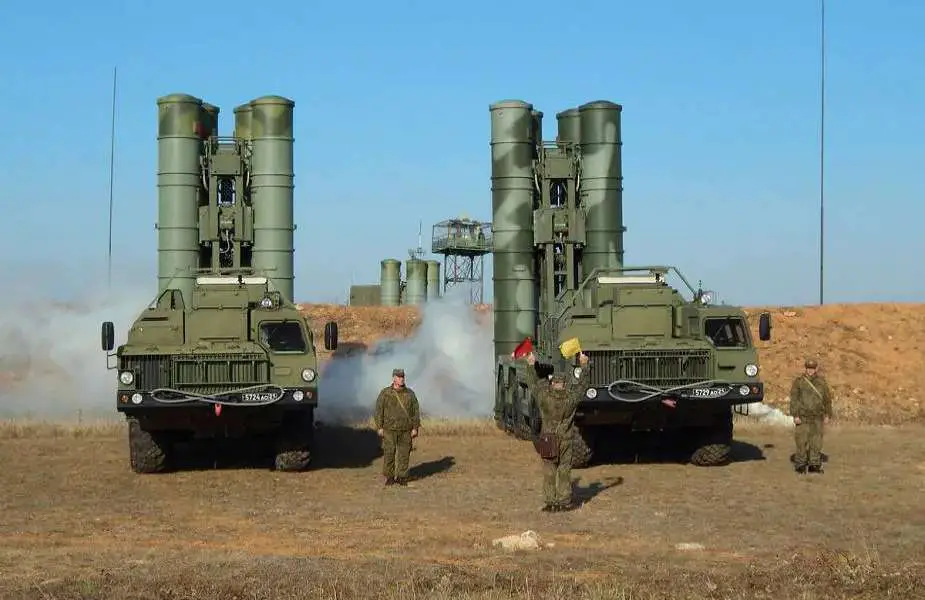Breaking news
India-Russia talks pending for final S-400 missile system deliveries.
As the geopolitical landscape remains tense due to the ongoing conflict between Russia and Ukraine, India and Russia are slated to hold discussions regarding the delivery schedule of the final two squadrons of the S-400 missile defense system. The Indian Air Force (IAF) has already made significant strides in enhancing its air defense capabilities by operationalizing three squadrons of the advanced system.
Follow Army Recognition on Google News at this link

India and Russia are slated to hold discussions regarding the delivery schedule of the final two squadrons of the S-400 missile defense system. (Picture source: Russian Social Media)
The delivery of the last two squadrons has faced setbacks, primarily attributed to the logistical and manufacturing disruptions caused by the Russia-Ukraine war. Reports from ANI news agency, citing defense sources, suggest a lack of clarity from the Russian side on the timeline for the remaining deliveries. Complicating matters further, there have been unconfirmed reports indicating that the S-400 units intended for India may have been diverted for Russian use in the ongoing conflict.
India has made significant strides in enhancing its air defense capabilities with the strategic deployment of the first two S-400 missile squadrons, known in NATO parlance as SA-21 Growler. The initial units, which arrived in December 2021 and April 2022, have been tactically positioned to fortify border security and augment India's defensive posture against potential threats from neighboring countries. Reports from ANI highlight that these squadrons are primarily responsible for the surveillance of the Ladakh sector, safeguarding the vital 'Chicken Neck' corridor in West Bengal, and overseeing the entire northeastern expanse.
The Indo-Russian deal for the S-400 missile system has garnered significant global attention, particularly considering its implications for India's diplomatic relations with the United States. The U.S. has voiced apprehensions about the possibility of imposing sanctions, pointing to India's defense ties with Russia and the potential for dual-use applications of Russian technology. Despite this, India has remained resolute, emphasizing that the acquisition of the S-400 is pivotal for its national security interests. The country continues to assert its stance on strategic independence and its prerogative to diversify its defense portfolio.
The S-400 system is renowned for its advanced capability to counter a wide array of aerial threats, including aircraft, ballistic missiles, and unmanned aerial vehicles, with an engagement range of up to 400 kilometers. Its multi-target tracking and engagement proficiency significantly elevate India's air defense mechanisms.
In a deal inked in October 2018, India's Ministry of Defense procured the S-400 systems for $5.43 billion. Following requests from New Delhi, Russia expedited the delivery process, a move made feasible by substantial Russian defense sector investments throughout the 2010s. These investments have not only bolstered Russia's defense manufacturing capacity but have also enabled it to fulfill export commitments to nations such as Belarus and India.
Recent sightings of the 51P6A launchers, integral to the S-400 system, suggest that production is nearing completion. Post-production inspections and testing are the final steps before these systems are dispatched to India. Despite the overhanging cloud of global geopolitical tensions and sanctions, Russia seems poised to meet its delivery commitments to India.
The first three S-400 squadrons have been operational in the northern and eastern sectors of India, actively participating in aerial defense exercises. These units were accompanied by simulators to facilitate training and operational readiness.
Parallel to the import of Russian S-400 systems, India is advancing in its endeavor to develop a comparable indigenous air defense system. This ambitious project, with an estimated budget exceeding Rs 20,000 crore, is anticipated to reach completion in the near future, according to defense sources referenced by India Today. The homegrown defense initiative is expected to incorporate a trio of missile types, each engineered to engage and neutralize threats at different ranges, extending up to nearly 400 kilometers. Further details on this indigenous project are awaited.


























